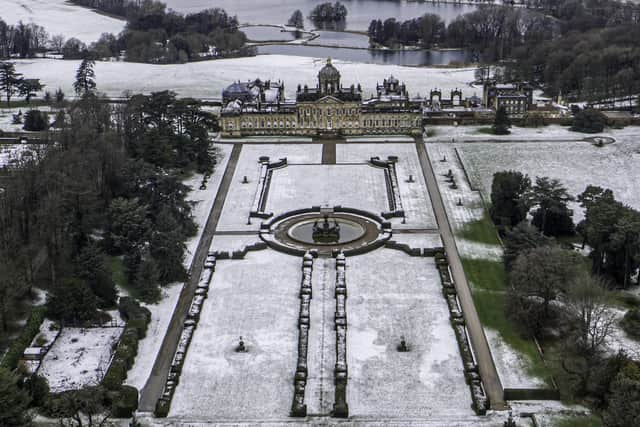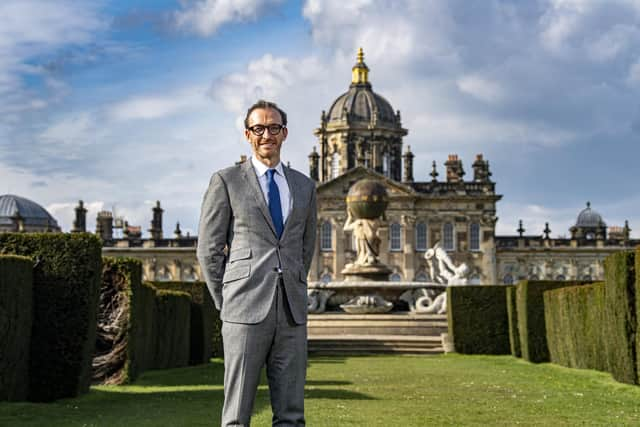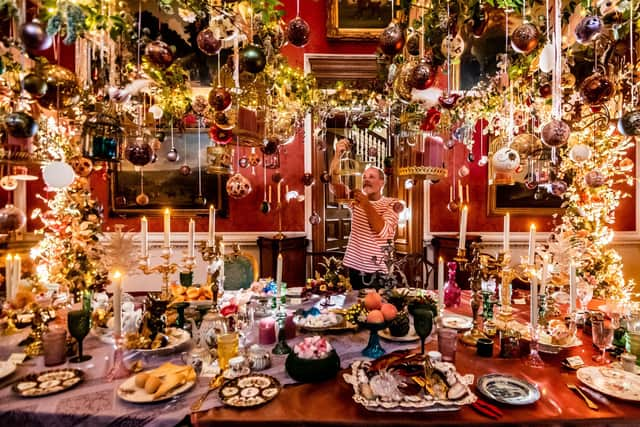Why Castle Howard is going to need more than visitor attractions to secure its future
But, while the twinkling lights and the carefully curated Christmas programme are most definitely designed to get people feeling festive - they are just a small part of a wider agenda being drawn up for the Castle Howard estate near York.
In a three part weekly series, Country Post editor Emma Ryan looks at the new vision for Castle Howard, the use of new science and why country estates can play a part in rural regeneration.
Ever since the ‘Great Fire of 1940’ which destroyed rooms in the basement, principal and upper levels, as well as the dome, which collapsed into the Great Hall a huge restoration scheme has been underway and is on-going - as are surging costs to fund it.


Advertisement
Hide AdAdvertisement
Hide AdOn the back of lockdown, climate and biodiversity emergencies - as well as issues increasingly facing rural communities - this last 12 months has seen a significant shift in the purpose and direction of Castle Howard, its estate and business.
Castle Howard is re-defining itself and its role to be much more than a visitor attraction.
Leading that is Jasper Hasell in the role of Estate Chief Executive - a position created last year.
Along with the Howard family, Mr Hasell has drawn up a vision that is based around three themes of Restore, Regenerate and Revive and has set about a re-organisation of the business.


Advertisement
Hide AdAdvertisement
Hide AdWhile Castle Howard was opened to the public years before many other stately homes followed suit to help fund the fire restoration, it is not enough to make the estate evolve and be sustainable.
Mr Hasell said: “It is no good having a single amount of capital injected into the business. We need to grow it in a way where we can take an annual investment back into the business and that looks after itself.
“It is a huge restoration and one that won’t be solved by selling the silverware. It does not bring a sustainable solution to the problem.”
Environment, farming and nature are key to the vision and one of the first appointments Mr Hasell made was that of Guy Thallon, who becomes Castle Howard’s first Head of Natural Environment, with a remit to develop a transformative, long term environmental strategy that will both secure the future of the estate and have benefits for the wider rural economy.


Advertisement
Hide AdAdvertisement
Hide AdMr Hassell said: “The estate has been working with nature for generations. We found an article from 1776, handwritten by the Fifth Earl and is his observation of how to make horse manure for compost and soil health.
“It is rather ironic that 300 years on, we have a soil scientist on our team who has probably read about the same techniques about making manure and they have come full circle. Regenerative farming is all about soil health.
“At that time they did not have fertiliser they had to work with nature to enhance soil and improve biodiversity. There is a lot more focus on that now but it is nice to see that the estate in the 1700s would have been scientific and still is.”
Over time the estate has seen 2500 acres of woodland planted and it produces 10,000 tonnes of carbon per annum - enough for the emissions of 1,000 homes.
Advertisement
Hide AdAdvertisement
Hide AdMore recently 26km of hedgerow have been created since 2013 and 50 per cent of grain crops are made into biofuels while 15,000 trees were planted this year as part of a ten year Woodland Management Plan.
Going forward there are plans to create more woodlands, plant more trees on pasture and grazing land and to re-introduce wetlands and water to reduce flood risks and to encourage more species, habitats and animals.
Looking at the Lime trees which line the imposing the drive up to Castle Howard, of his nature loving predecessors, Mr Hasell adds: “They planted them but never saw the benefit of it. All the things we are doing now, we will not see the benefit and do it anyway.
“Estates with a long term view can be a catalyst to change.”
